Wilson's Barberry Berberis wilsoniae

ABOUT
Berberis wilsoniae, commonly known as Wilson's barberry, is a decidacious, multiple-stemmed shrub that is visually striking throughout the seasons. During the spring, it is adorned with racemes of bright yellow flowers that dangle elegantly from the branches. These flowers provide a vibrant contrast against the foliage, which consists of small, elliptical leaves that exhibit an attractive gray-green color on the top, with a paler, sometimes almost white underside that contains hints of a powdery bloom. As the seasons progress into autumn, the leaves of Wilson's barberry transform into a fiery combination of orange, red, and purple hues, delivering a dramatic display that makes the plant stand out in the landscape. Additionally, this transformation coincides with the development of its fruit. Berries emerge as small, egg-shaped structures, initially exhibiting a coral to red shade, and then maturing to a deep purplish-black. These berries are often found clustered along the stems, offering ornamental interest as well as a food source for birds and wildlife. The stems of Wilson's barberry are notable for their sharp spines, which are typically arranged in groups of three. These spines serve as a defense mechanism against herbivores and also add to the plant's overall texture and character. The bark on mature stems tends to have a grayish-brown color and provides an additional layer of visual appeal, especially during the winter months when the leaves have fallen, revealing the intricate branch pattern and the exfoliating nature of the bark. Overall, Wilson's barberry is characterized by its seasonal transformations, intriguing textures, and vibrant colors, which all contribute to its popularity as an ornamental garden plant.
About this plant
 Names
NamesFamily
Berberidaceae
Synonyms
Wilson's Barberry
Common names
Berberis wilsoniae var. subcaulialata, Berberis wilsoniae var. chinensis
 Toxicity
ToxicityTo humans
Wilson's Barberry is generally not considered highly toxic to humans. However, like many plants in the Berberidaceae family, it may contain alkaloids such as berberine that can be mildly toxic if ingested in large quantities. Symptoms of berberine poisoning can include stomach upset, lethargy, nausea, vomiting, diarrhea, and dizziness. Particularly in vulnerable individuals such as children, caution is advised to avoid ingestion of berries or plant parts. However, cases of severe poisoning are rare.
To pets
Wilson's Barberry is also not typically considered highly toxic to pets. However, as with humans, the presence of alkaloids like berberine can cause mild gastrointestinal distress if pets consume large amounts of the plant. Symptoms in pets might include drooling, vomiting, diarrhea, and a lack of appetite. While it is usually not considered life-threatening, if a pet consumed a substantial quantity of the plant and is displaying symptoms, it would be prudent to consult with a veterinarian.
 Characteristics
CharacteristicsLife cycle
Perennials
Foliage type
Deciduous
Color of leaves
Green
Flower color
Yellow
Height
1-4 feet [0.3-1.2 meters]
Spread
2-5 feet [0.6-1.5 meters]
Plant type
Shrub
Hardiness zones
6
Native area
China
Benefits
 General Benefits
General Benefits- Landscape enhancement: Berberis wilsoniae, commonly known as Wilson's Barberry, offers ornamental value with its vibrant foliage and red berries.
- Habitat provision: The shrub provides shelter and nesting sites for various bird species.
- Soil stabilization: The plant’s root system helps prevent soil erosion in sloped gardens and landscapes.
- Drought tolerance: Wilson's Barberry is known for its ability to withstand periods of drought once established, making it suitable for xeriscaping.
- Seasonal interest: With its spring flowers, summer berries, and autumn leaf color, this plant offers visual appeal across multiple seasons.
- Pollinator attraction: The flowers of Wilson's Barberry attract pollinators like bees, which are essential for the health of many ecosystems.
- Low maintenance: This plant typically requires minimal care once established in an appropriate setting, making it a convenient choice for gardeners of all skill levels.
- Wildlife food source: The berries serve as a food source for certain bird species during the fall and winter months.
 Medical Properties
Medical Properties- Antibacterial: Berberis wilsoniae is believed to contain berberine, a compound that has antibacterial properties.
- Anti-inflammatory: The plant may have anti-inflammatory effects which could be beneficial in reducing inflammation.
- Antioxidant: The presence of antioxidant compounds could help in neutralizing free radicals in the body.
- Antipyretic: Berberis wilsoniae might be used to reduce fever due to its potential antipyretic properties.
- Hepatoprotective: It may offer some liver-protecting benefits, supporting overall liver health.
- Antidiarrheal: Due to the presence of alkaloids such as berberine, it might be used to alleviate diarrhea.
- Immunomodulatory: There could be components in the plant which modulate the immune system.
 Air-purifying Qualities
Air-purifying QualitiesThis plant is not specifically known for air purifying qualities.
 Other Uses
Other Uses- Barberry ink - Berberis wilsoniae berries can be used to create a natural dye or ink for artistic purposes, due to their strong pigmentation.
- Photography - The intense color of the berries can provide a striking contrast in botanical photography and be used for educational or artistic displays.
- Garden design - Due to its dense growth and attractive foliage, Wilson's barberry can serve as a natural border or hedge in landscaping projects.
- Winter interest - With its persistent fruits and sometimes evergreen leaves, Wilson's barberry adds color and texture to gardens during winter months.
- Wildlife shelter - Wilson's barberry can offer protective shelter for small birds and other wildlife within its thorny branches.
- Bird feeding station - The berries of Wilson's barberry provide a food source for birds, making it an ideal plant for birdwatchers to cultivate.
- Thorny barriers - The prickly nature of Wilson's barberry can be used to create deterrent barriers against unwanted animals or intruders in a garden setting.
- Erosion control - With its sturdy root system, Wilson's barberry can be planted on slopes to help prevent soil erosion.
- Fall foliage - The bright red and orange leaves of Wilson's barberry in the fall can be used in autumnal decorations both indoors and outdoors.
- Seed crafts - The hard seeds of Wilson's barberry can be utilized in making jewelry or decorative items after they have been cleaned and dried.
Interesting Facts
 Feng Shui
Feng ShuiThe Wilson Barberry is not used in Feng Shui practice.
 Zodiac Sign Compitability
Zodiac Sign CompitabilityThe Wilson Barberry is not used in astrology practice.
 Plant Symbolism
Plant Symbolism- Protection: Berberis wilsoniae, commonly known as Wilson's Barberry, is often associated with protection due to its spiny branches, which can serve as a natural barrier against unwanted animals and energies.
- Adaptability: Wilson's Barberry is known for its ability to thrive in various soil conditions and climates, symbolizing the ability to adapt and flourish in different environments.
- Purification: In some traditions, barberries are thought to have purifying qualities, with the plant being used to cleanse the body and spirit of negative influences.
 Water
WaterWilson's Barberry should be watered deeply but infrequently, allowing the soil to dry out slightly between waterings. Mature plants are quite drought-tolerant and typically require watering every one to two weeks, depending on the climate and weather conditions. Use about 1 to 1.5 gallons of water for each plant during each watering session, ensuring that the water penetrates the soil well. Be cautious not to overwater, as this can lead to root rot. Adjust the frequency during extremely hot or dry periods by providing additional water.
 Light
LightFor Wilson's Barberry, full sun to partial shade is ideal, meaning the plant thrives in a spot that receives at least 4 to 6 hours of direct sunlight daily. The more sunlight it receives, the brighter the foliage will be. However, in extremely hot climates, some afternoon shade can help protect the plant from excessive heat.
 Temperature
TemperatureWilson's Barberry prefers moderate temperatures and can survive in a range from approximately 0 to 90 degrees Fahrenheit. However, it thrives best when the temperature is between 60 to 75 degrees Fahrenheit. It is quite cold hardy and can endure brief periods of colder temperatures, but prolonged exposure below freezing can be detrimental to the plant.
 Pruning
PruningPrune Wilson's Barberry in late winter or early spring to remove any dead or damaged branches and to shape the plant. This timing helps prevent diseases and allows for vigorous spring growth. Annual pruning is generally enough to maintain its shape and encourage healthy growth. Pruning can also rejuvenate older plants by cutting them back to about one-third of their size.
 Cleaning
CleaningAs needed
 Soil
SoilWilson's Barberry prefers well-draining soil with a slightly acidic to neutral pH of 5.5 to 7.0. A mix containing equal parts of loam, peat, and sharp sand can provide the adequate drainage and fertility this plant needs for optimal growth.
 Repotting
RepottingWilson's Barberry does not require frequent repotting. It should be repotted once every three to four years or when the root system outgrows the current container.
 Humidity & Misting
Humidity & MistingWilson's Barberry thrives best in moderate humidity levels but is quite adaptable and does not require any special humidity conditions.
 Suitable locations
Suitable locationsIndoor
Place Wilson's Barberry in bright light, avoiding direct sun.
Outdoor
Plant in well-drained soil; partial to full sun exposure.
Hardiness zone
5-9 USDA
 Life cycle
Life cycleBerberis wilsoniae, commonly known as Wilson's barberry, begins its life as a seed, which after dispersing, often by birds who eat the berries and then excrete the seeds, will germinate given the right conditions of soil and temperature. The seedling then emerges, gradually developing into a young plant with a rosette of leaves close to the ground. As it matures, Wilson's barberry transitions to the vegetative stage, growing stems, leaves, and developing a robust root system. Once the plant has reached maturity, it flowers, usually in spring, with the flowers typically being yellow and borne in racemes. Following pollination, which is often assisted by insects, the flowers develop into small red oblong berries which contain seeds, completing the reproductive cycle. This perennial can live for many years, continuing to grow and undergo cycles of flowering and fruiting annually.
 Propogation
PropogationPropogation time
Spring to Summer
Propogation: Berberis wilsoniae, commonly known as Wilson's barberry, is best propagated through seeds or semi-hardwood cuttings. The most popular method for propagating Wilson's barberry is by using semi-hardwood cuttings, typically taken in late summer. To propagate using this method, a gardener would select a healthy, non-flowering shoot and cut a 4 to 6-inch (about 10 to 15 centimeters) length, making the cut just below a leaf node. The leaves on the lower half of the cutting should be removed, and the cut end can be dipped in rooting hormone powder to enhance root development. The cutting should then be inserted into a pot filled with a well-draining soil mix, ensuring that at least two nodes are buried where leaves were removed. The pot needs to be kept in a warm, humid environment with indirect light to encourage rooting, which typically will occur within a few weeks. Regular misting or a plastic cover can be used to maintain humidity. Once roots have established, the young plants can be gradually acclimatized to outdoor conditions and then transplanted to their final location.
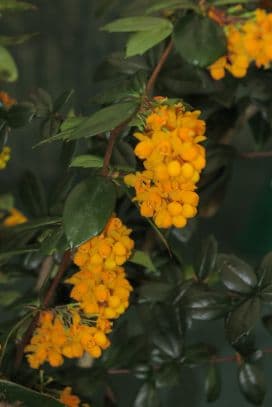
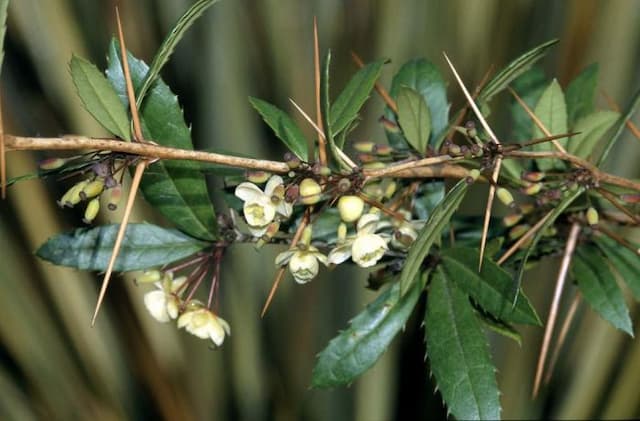
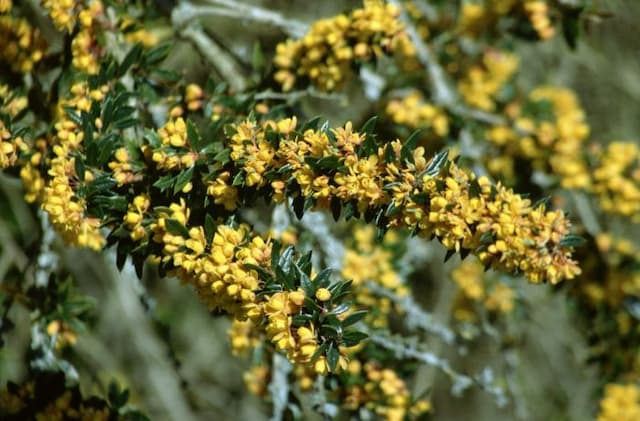
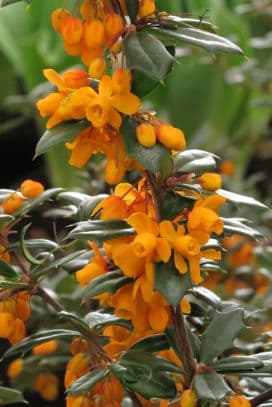
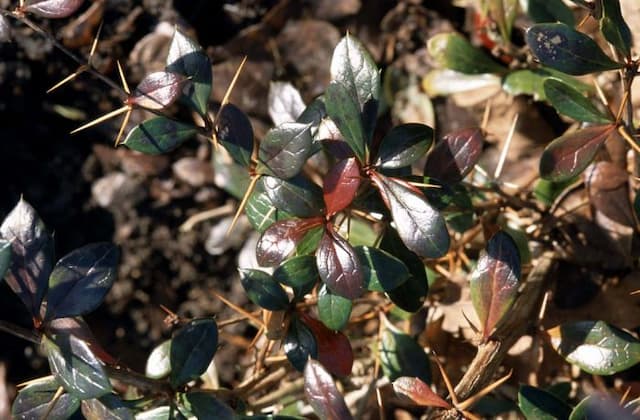



![Japanese barberry [Bonanza Gold]](/_next/image?url=https%3A%2F%2Fplants-admin.emdemapps.com%2Fimages%2Fplants%2F%2Fimages%2F604b5385e413f.png&w=640&q=75)
